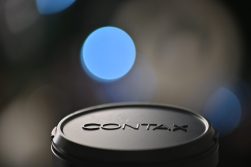Micro Contrast, or microcontrast, or tonal range, measures the ability of a lens to resolve shade variations. There has always been a debate whether micro contrast actually matters, or even exists at all. These debates typically also involve discussions of “3D pop” and “Zeiss rendering”. Over the years I’ve come to realize that some people perceive micro contrast and color differently than others. I can clearly see differences in micro contrast between lenses, while many cannot. Many do not realize that when they argue for, or against, micro contrast, what they are really arguing about is people’s ability to distinguish shades of color, which varies person to person. That being said, let’s talk a bit about the micro contrast of CONTAX Zeiss lenses.
I’ve always found something special about Zeiss glass. Whether it’s the coatings Zeiss uses, the optical design, the number of elements, or the end goal set upon by the lens designers, Zeiss glass, at least for me, has always outperformed competitor lenses. Even Zeiss Glass going back to the 1950’s. So why is this?
Take a look at this piece of driftwood I recently shot with the CONTAX Zeiss 100mm Makro Planar:

While there’s nothing special about the composition of this photo, it shows the level of micro contrast capable with the 100mm f2. For some elusive reason, there’s that “3D pop” to the image.
Over the past 20 years or so, there has been a push towards sharper and sharper lenses, and the removal of any and all chromatic aberration. While this may be great for MTF charts, it can end up having negative effects on the more indescribable aspects of a good image. This could be caused by the increased number of elements in modern lenses, and lens manufactures choosing sharpness above all other aspects of a lens.
